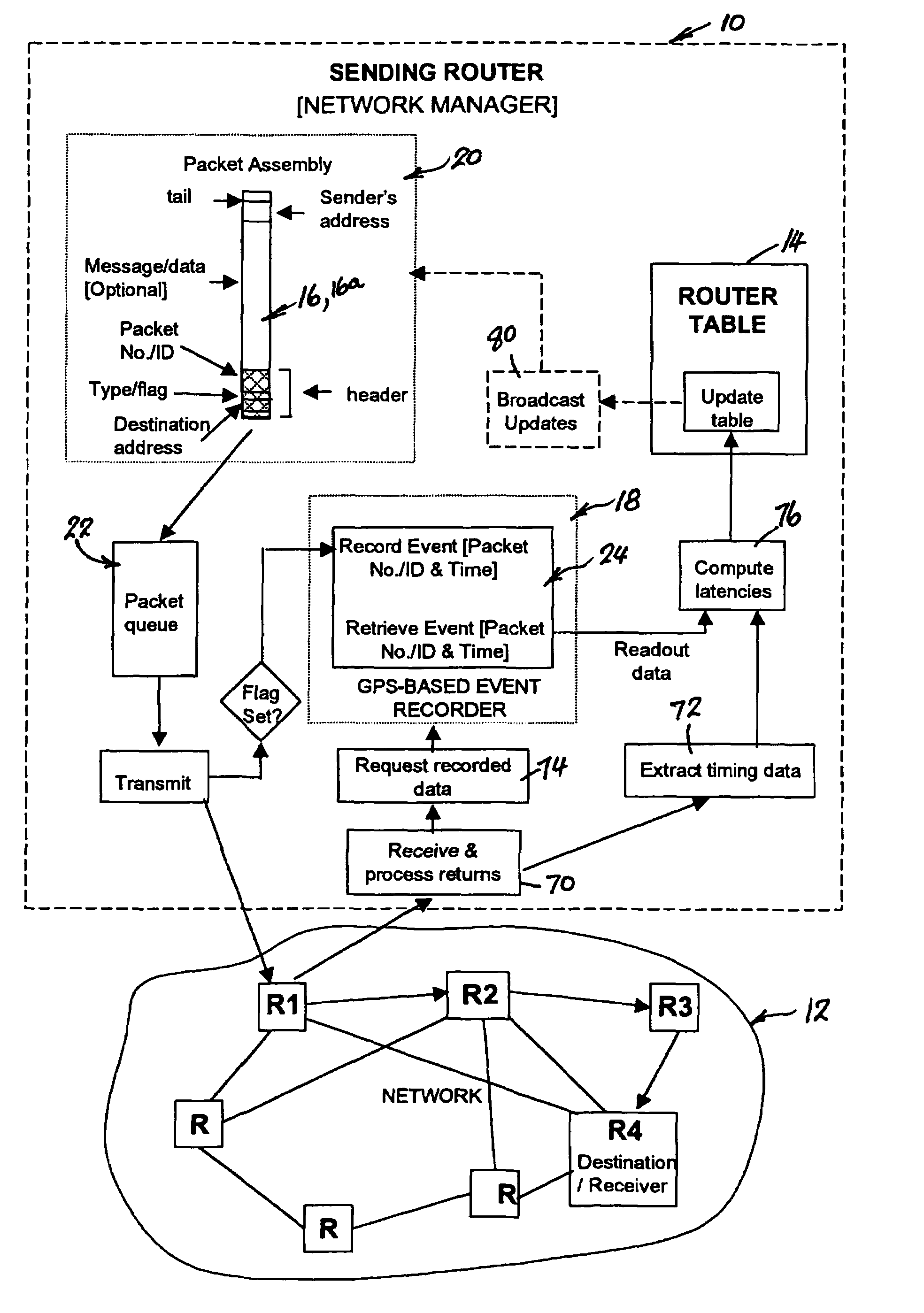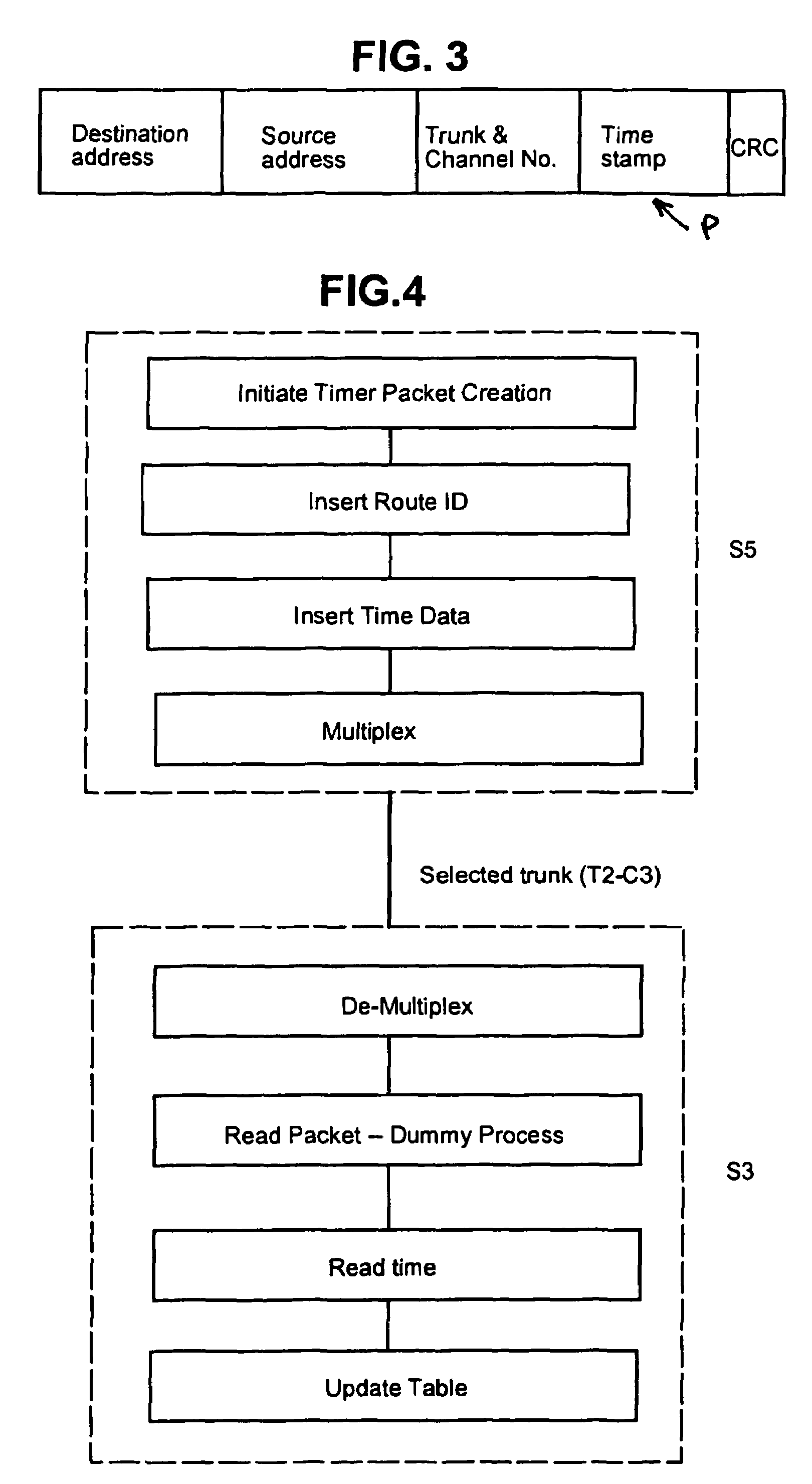Adaptive packet routing
a packet routing and packet technology, applied in data switching networks, frequency-division multiplexes, instruments, etc., can solve the problems of high network resource waste, high processing time, and low processing efficiency of packet routing,
- Summary
- Abstract
- Description
- Claims
- Application Information
AI Technical Summary
Benefits of technology
Problems solved by technology
Method used
Image
Examples
Embodiment Construction
[0034]Having broadly portrayed the nature of the present invention, examples of the implementation of the invention will now be indicated by way of illustration only. The examples will be described with reference to the accompanying drawings in which:
[0035]FIG. 1 is a diagram of a group of interconnected switches that forms part of a telecommunications network of the first example.
[0036]FIG. 2 is a diagram showing one of the switches of the network of FIG. 1, together with its connecting links, in more detail.
[0037]FIG. 3 is a diagram illustrating the structure of a timer packet employed in the first example.
[0038]FIG. 4 is a flow diagram illustrating the procedure by which a timer packet is generated and accepted by interconnected switches of the first example.
[0039]FIG. 5 is an example of a look-up table that is automatically built and maintained at each switch of the network for the purpose of intelligent routing.
[0040]FIG. 6 is a schematic diagram of a switch of the second examp...
PUM
 Login to View More
Login to View More Abstract
Description
Claims
Application Information
 Login to View More
Login to View More - R&D
- Intellectual Property
- Life Sciences
- Materials
- Tech Scout
- Unparalleled Data Quality
- Higher Quality Content
- 60% Fewer Hallucinations
Browse by: Latest US Patents, China's latest patents, Technical Efficacy Thesaurus, Application Domain, Technology Topic, Popular Technical Reports.
© 2025 PatSnap. All rights reserved.Legal|Privacy policy|Modern Slavery Act Transparency Statement|Sitemap|About US| Contact US: help@patsnap.com



